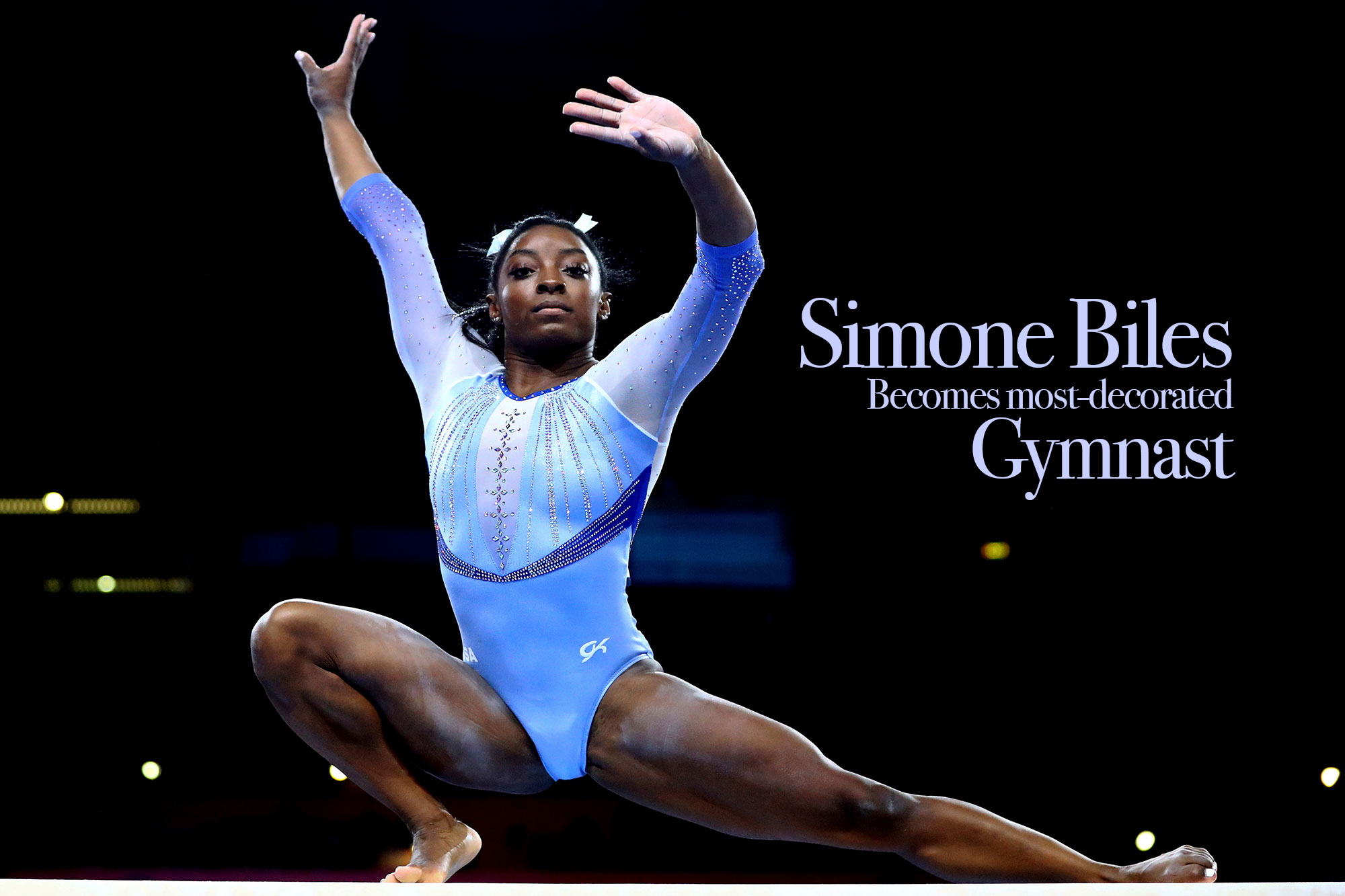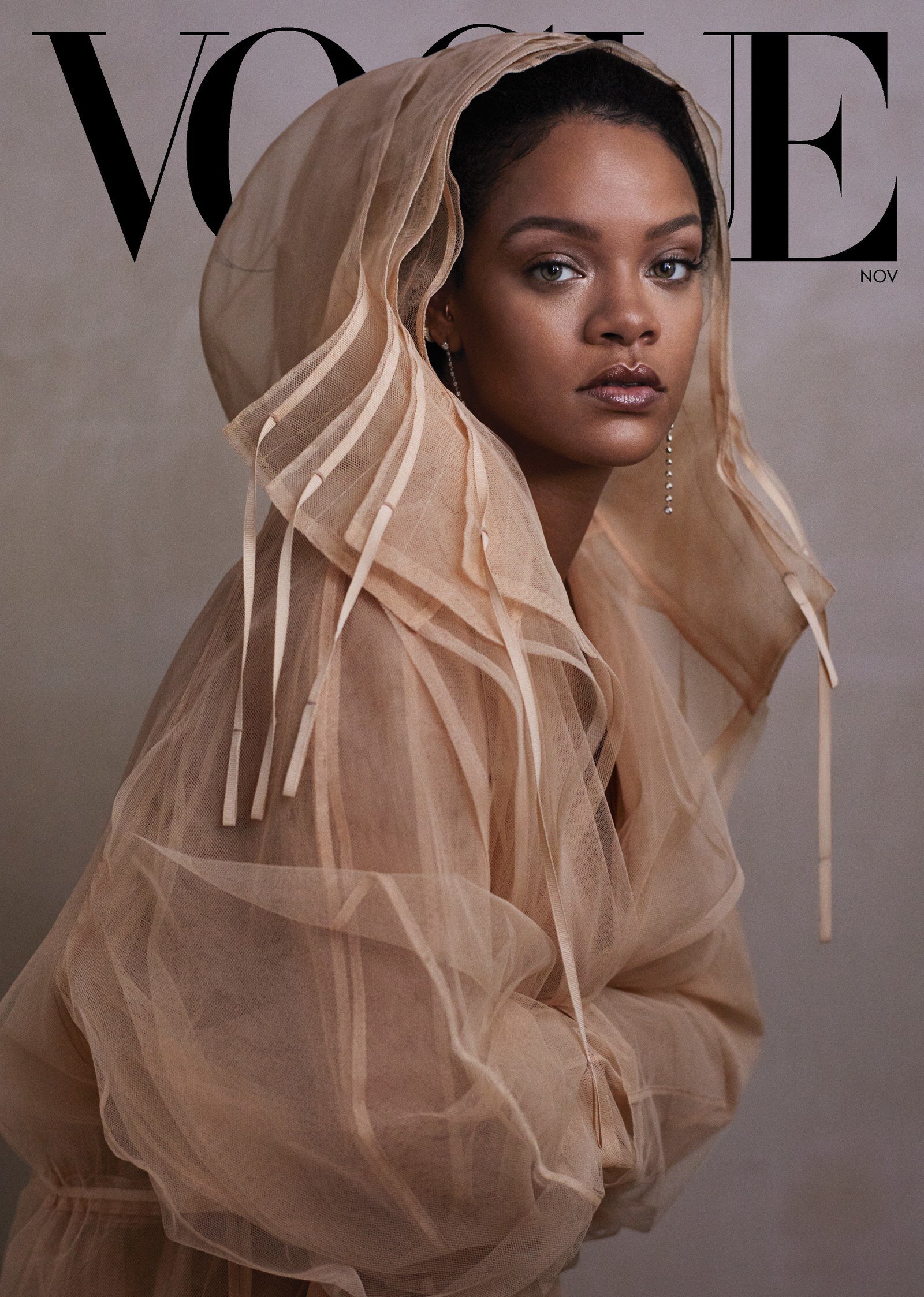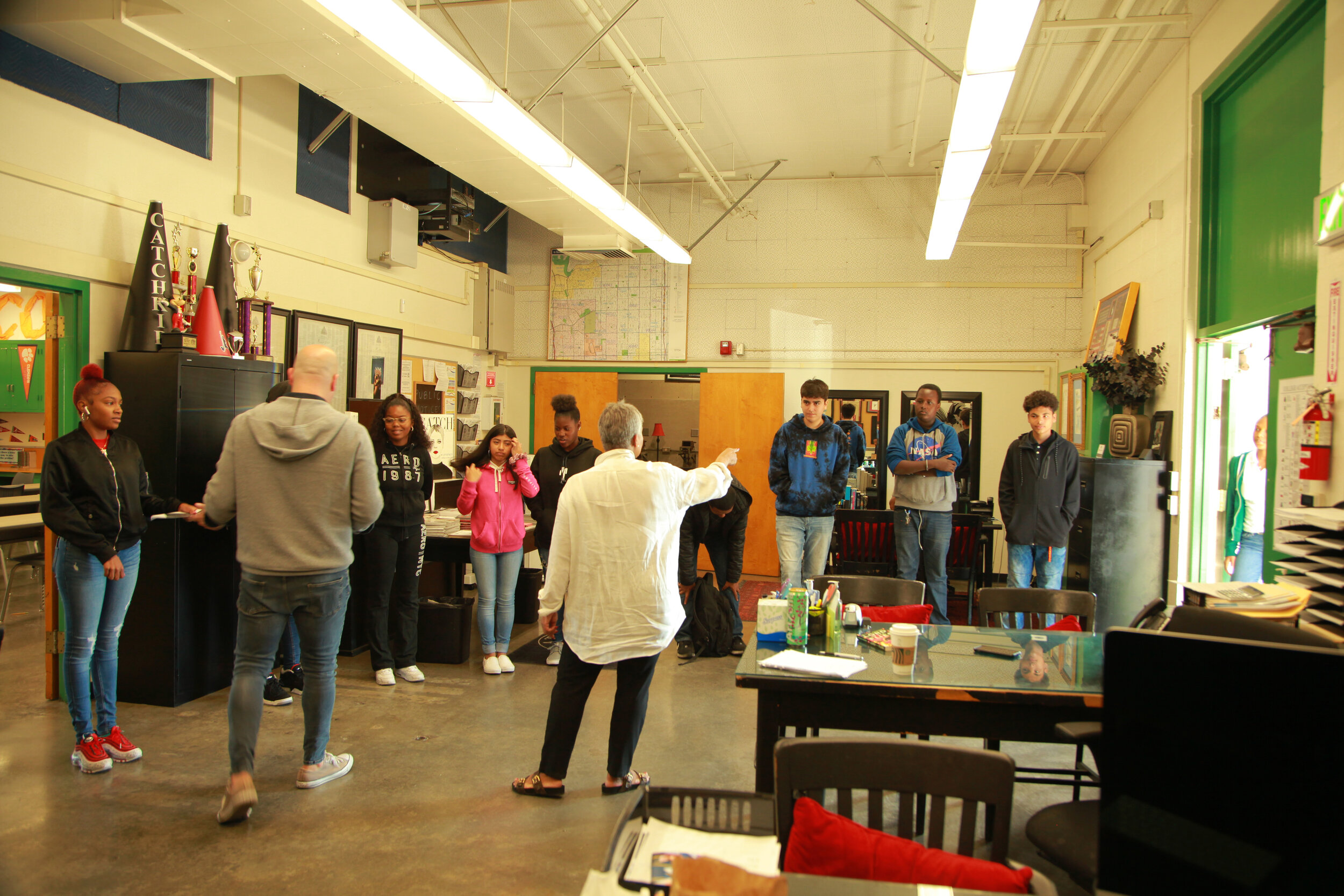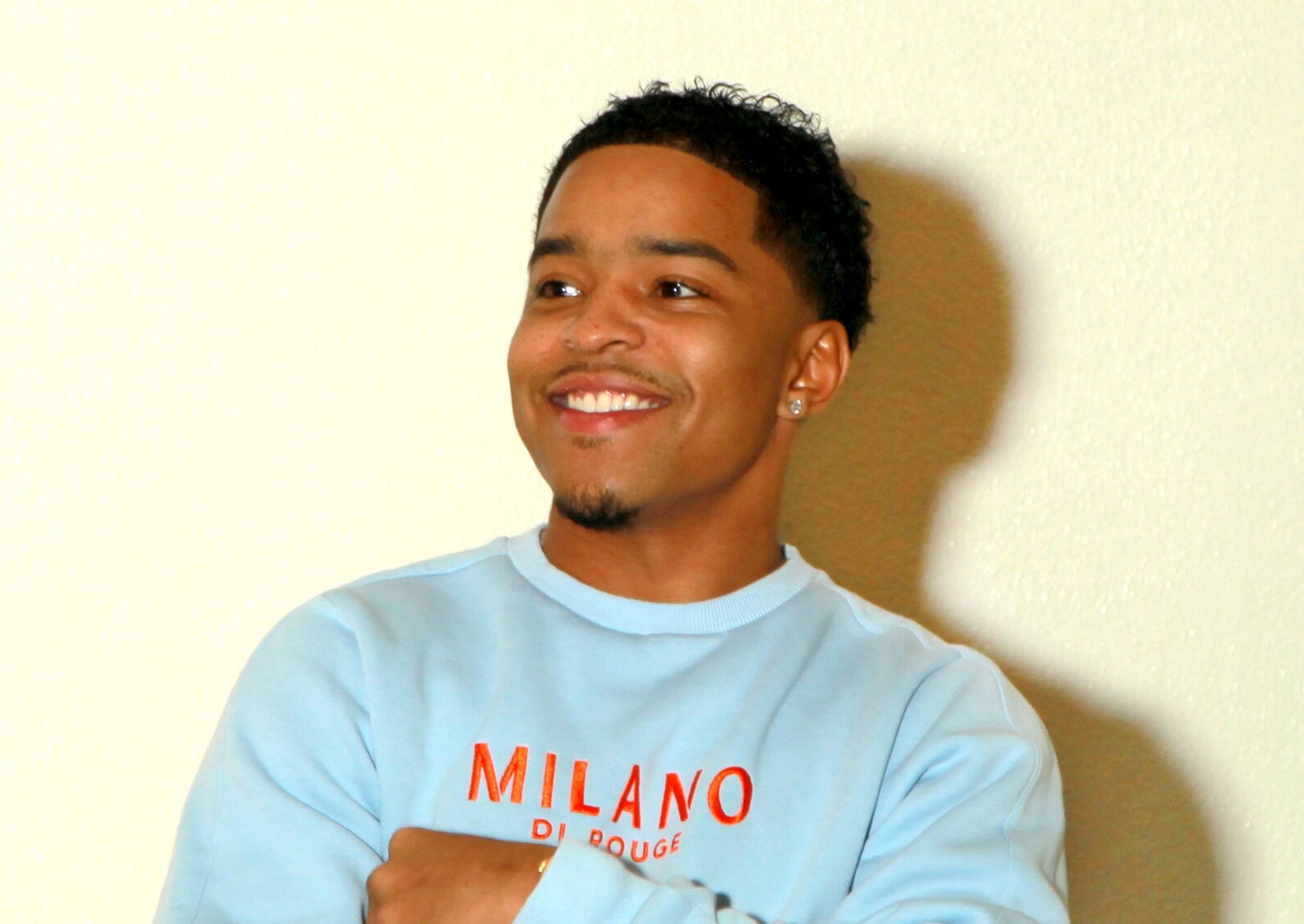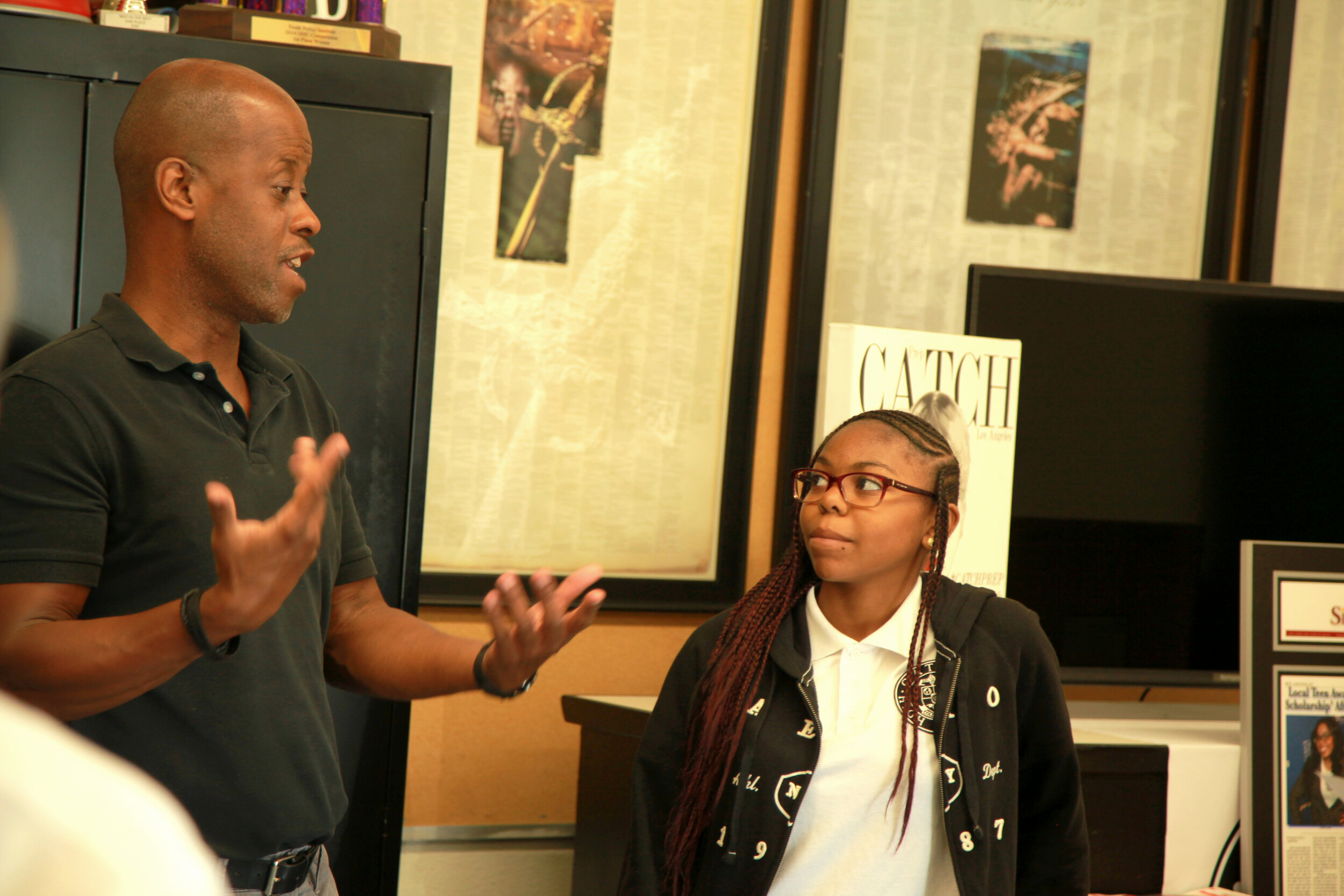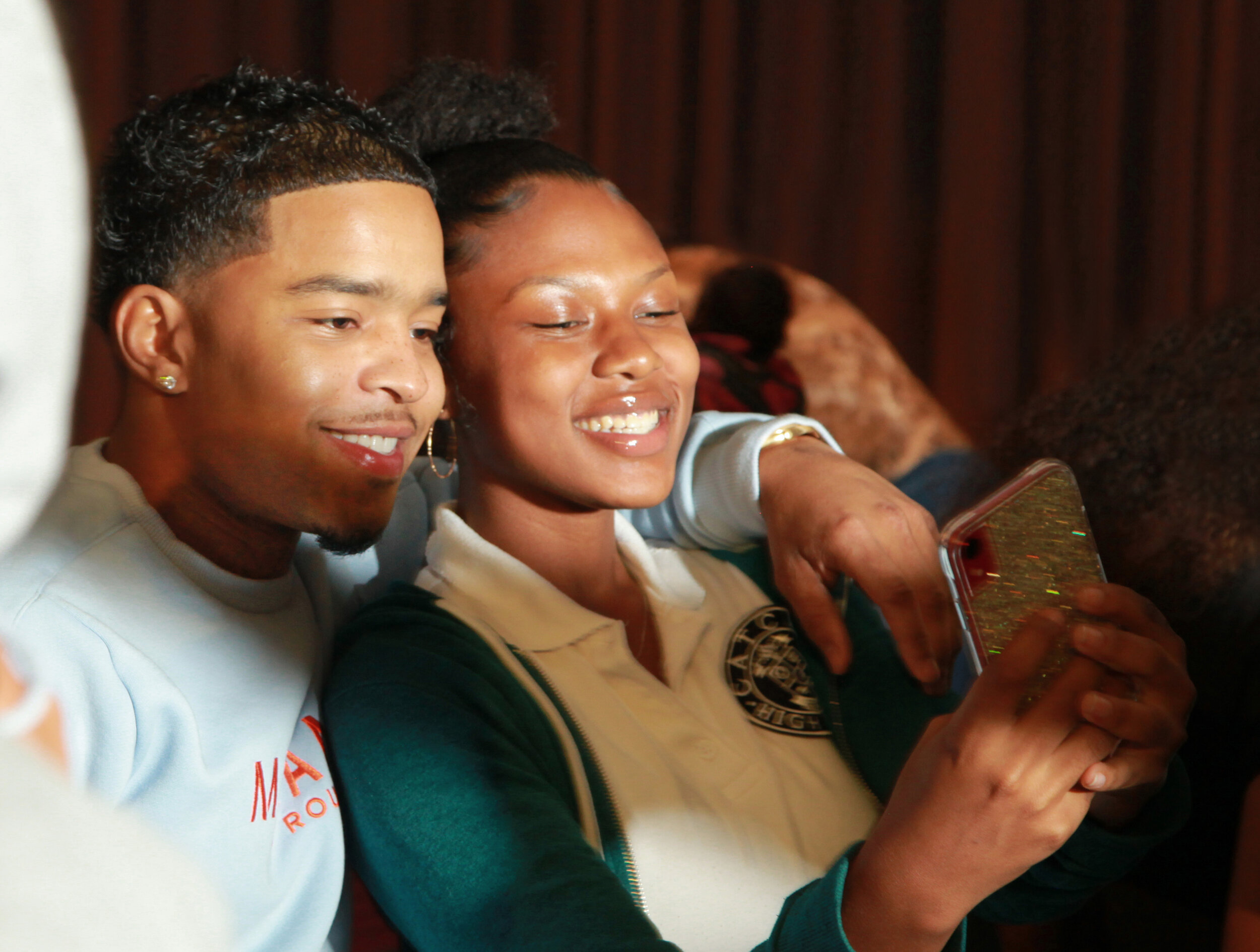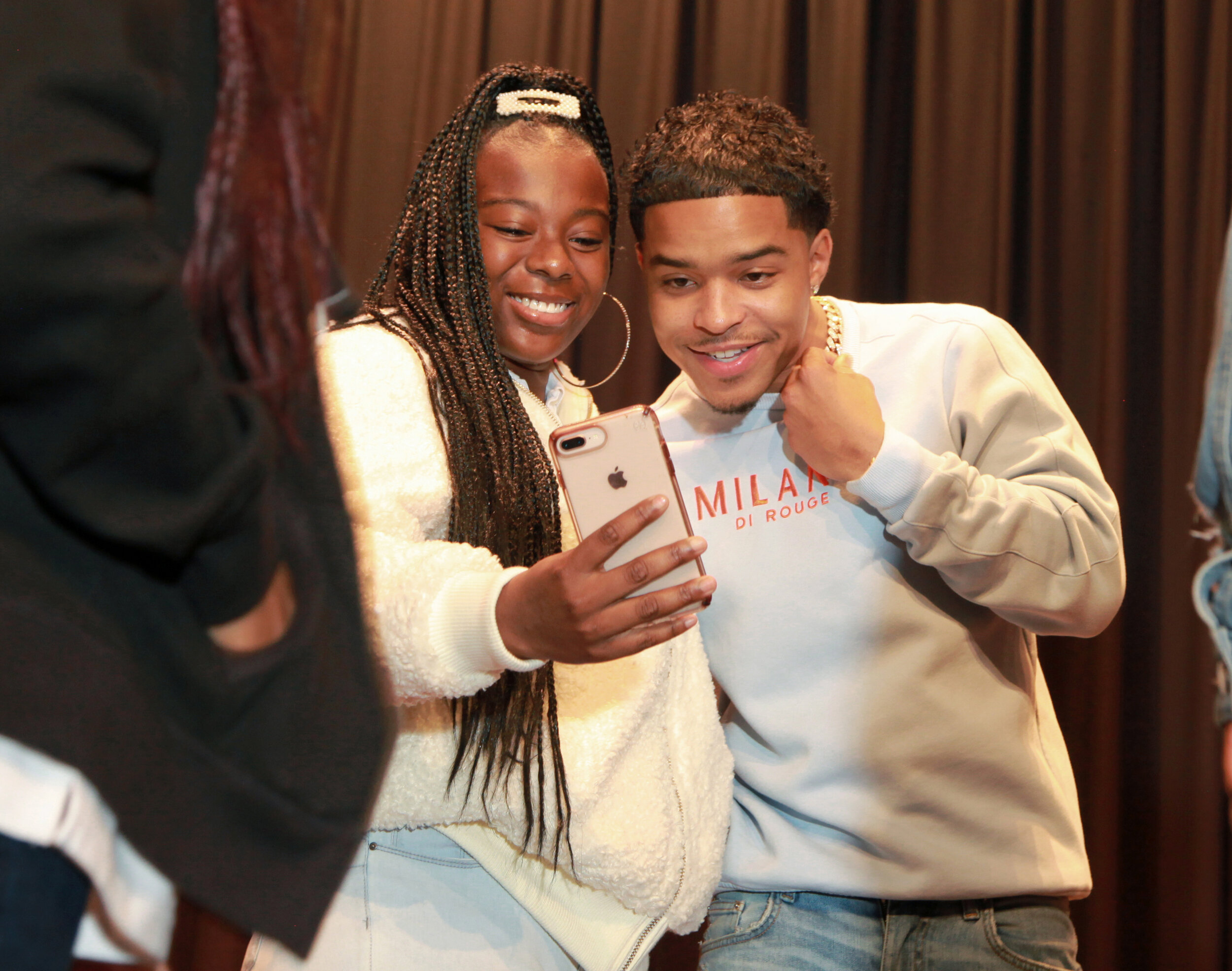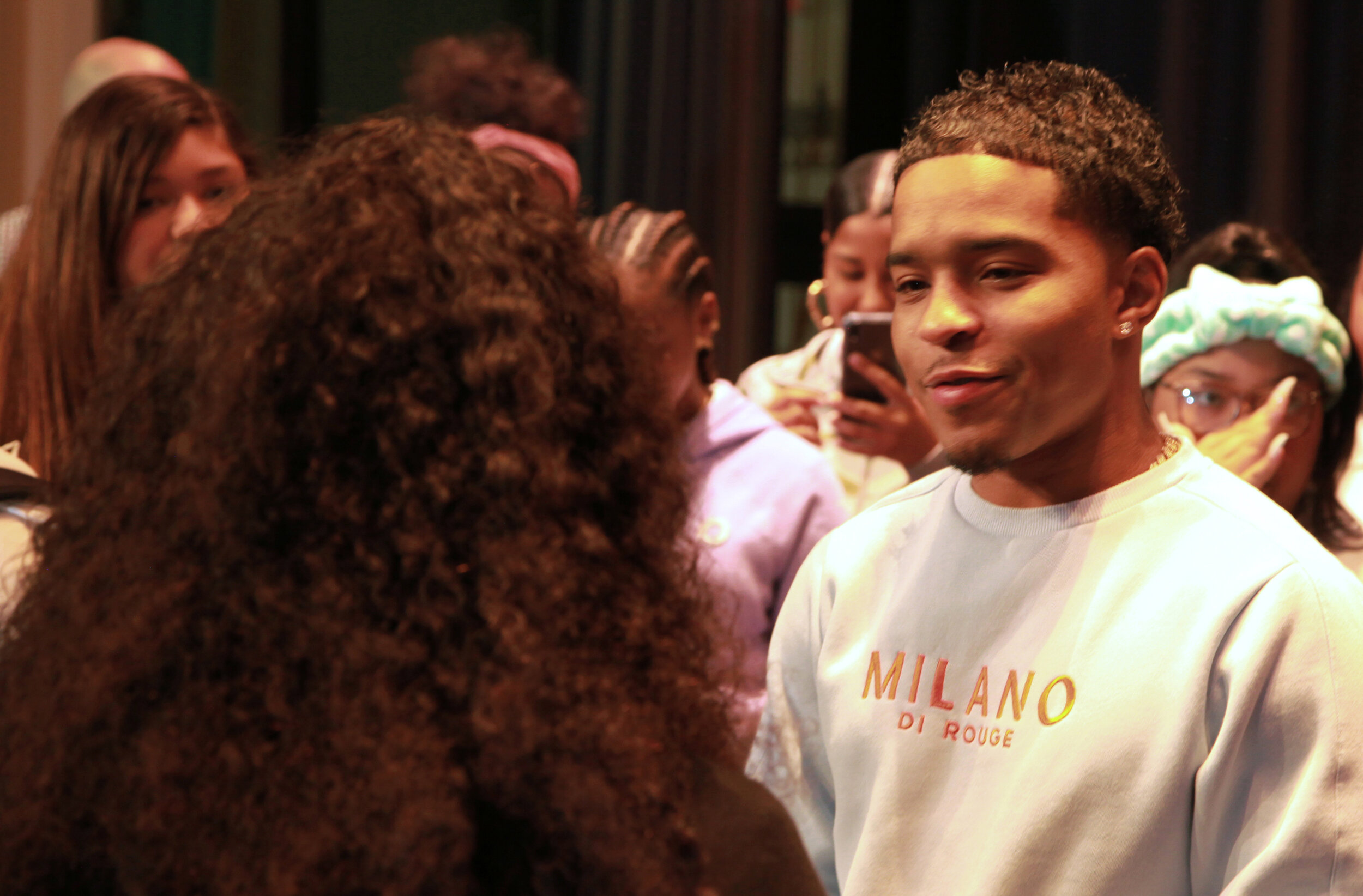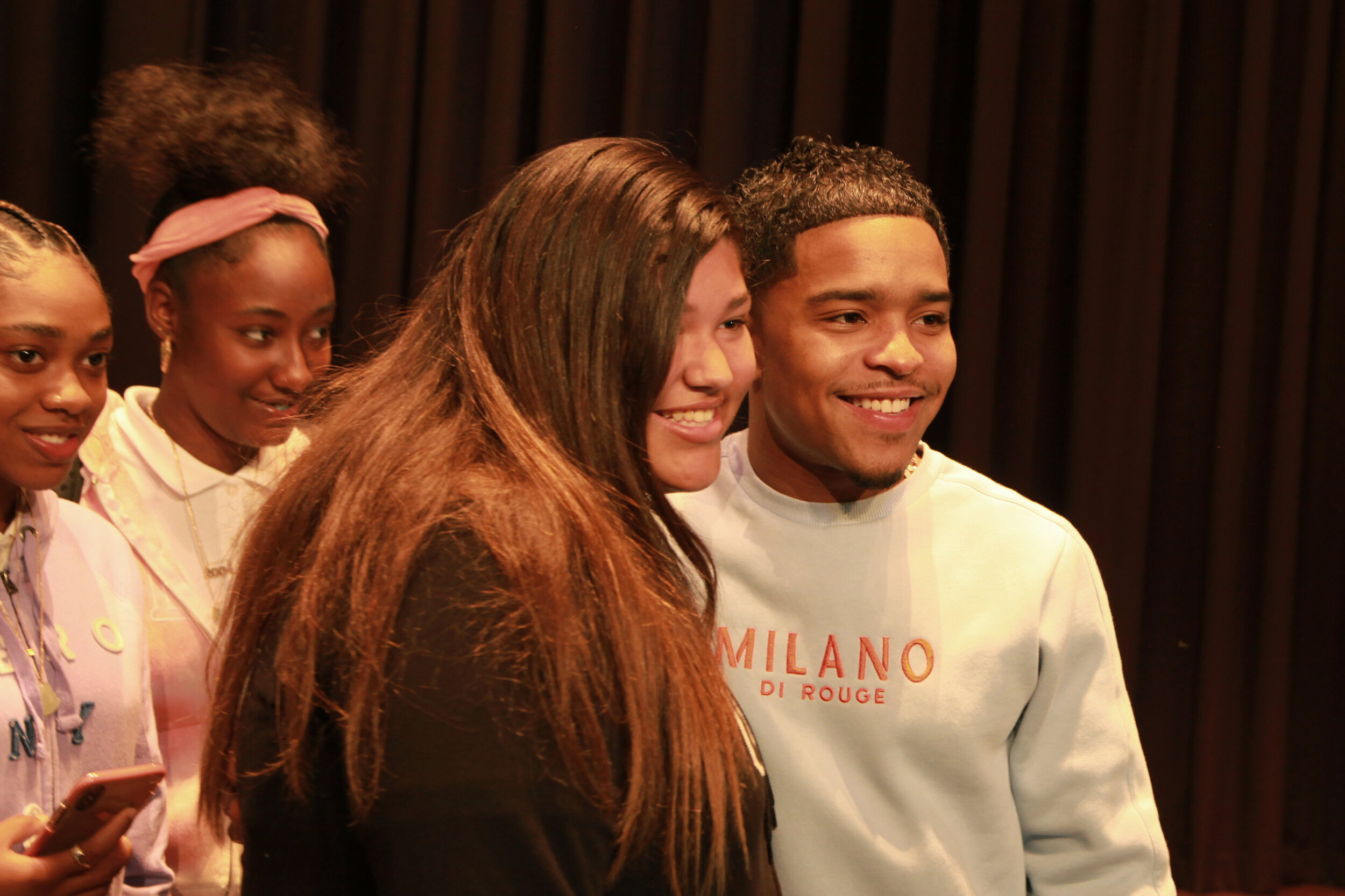Simone Biles really knows how to close out a show.
STUTTGART, Germany
Biles became the most-decorated gymnast, male or female, at the world championships Sunday, winning gold on balance beam and floor exercise. Those were her 24th and 25th medals at worlds, surpassing the previous record by Vitaly Scherbo.
Scherbo, who competed for the Soviet Union, Unified Team and Belarus at five world championships, had 23. Though he had two more events in which to collect his medals, mind you.
There was no mic drop when Biles finished floor, as she did to close out the all-around. Instead, she flashed a huge smile and blew kisses to the crowd. Coach Laurent Landi clapped his hands over his head, then gave her a big hug as she came off the podium.
She leaves worlds with 19 gold medals, extending her own record. It's the first time she's won five golds at the world championships, and will no doubt spark talk of her doing the same at next summer's Tokyo Olympics.
American teammate Sunisa Lee was the silver medalist on floor.
Biles had tied Scherbo on Saturday by winning the vault title. When she saw her score on beam, a 15.066, a huge grin spread across her face and she jumped out of her seat. She threw a roundhouse punch before exchanging high fives and a hug with coach Laurent Landi.
And with the record came a bit of redemption.
Biles was the world champion on the event in 2014 and 2015. But a mistake on beam at the Rio Olympics — her foot slipped on the landing of a front tuck and she had to grab the beam to keep from falling off — shook her confidence.
A wobbly routine at last year’s world championships didn’t help. She was the bronze medalist in both Rio and at last year’s worlds.
“I was like, 'I guess I’m just never going to do well on beam again,' " Biles told USA TODAY Sports on Friday in an exclusive interview.
But Cecile Landi, who coaches Biles with her husband, Laurent, and is responsible for beam, helped Biles regain her swagger. She was the most consistent gymnast on the event, posting the highest score in qualifying, team final and the all-around.
“My main goal is to go out there and compete beam with confidence, and hopefully do well in that event because I know how strong I am,” Biles said. “Even though I got a bronze, I’m hoping for a little bit better because I know I’m capable of it.”
She got the upgrade, and the record to go with it.
By The USA Today
Mr. Abiy spearheaded a peace accord in his region and catalyzed reforms at home.
Abiy Ahmed, the prime minister of Ethiopia, was awarded the Nobel Peace Prize on Friday, for his work in restarting peace talks with neighboring Eritrea, ending a long stalemate between the two countries.
Mr. Abiy, 43, broke through two decades of frozen conflict between his vast country, Africa’s second most populous, and Eritrea, its small and isolated neighbor. When he became prime minister of Ethiopia in 2018, he threw himself at a breakneck pace into reforms at home, and peace negotiations with the rebel-turned-dictator Isaias Afwerki, president of Eritrea.
The two nations share deep ethnic and cultural ties, but until July last year they had been locked into a state of neither peace nor war, a conflict that had separated families, complicated geopolitics and cost the lives of more than 80,000 people during two years of border violence.
In its official announcement, the Nobel Committee detailed a litany of accomplishments for Mr. Abiy in his first 100 days as prime minister: lifting the country’s state of emergency, granting amnesty to thousands of political prisoners, discontinuing media censorship, legalizing outlawed opposition groups, dismissing military and civilian leaders suspected of corruption, and increasing the influence of women in political and community life.
“Abiy Ahmed has initiated important reforms that give many citizens hope for a better life and a brighter future,” the Norwegian Nobel Committee said.
But some of Mr. Abiy’s reforms at home, however positive on paper, have also unleashed forces that seem to be beyond his control.
Ethnic rivalries have flared in recent years and more than two million people have been internally displaced because of conflict.
“No doubt some people will think this year’s prize is being awarded too early,” Berit Reiss-Andersen, the chair of the Norwegian Nobel Committee, acknowledged. “The Norwegian Nobel Committee believes it is now that Abiy Ahmed’s efforts deserve recognition and need encouragement.”
The peace accord signed more than a year ago between Mr. Abiy and Mr. Isaias has only slowly translated into concrete steps to reconnect the two nations. Genuine change for Eritreans has been limited: They remain isolated and under Mr. Isaias’s iron fist despite the peace.
But the agreement has been held up as an example of how historic change can come about in even the oldest and most intractable conflicts. Diplomatic relations between Ethiopia and Eritrea have resumed, and the two leaders and senior officials from both nations have met frequently to discuss how to reconnect the two countries.
“Peace does not arise from the actions of one party alone,” Ms. Reiss-Andersen said as she announced the award on Friday. “When Prime Minister Abiy reached out his hand, President Afwerki grasped it, and helped to formalize the peace process between the two countries.”
Telecommunications between Ethiopia and Eritrea have been restored, allowing families that were split in the war to regain contact. In the days that followed this breakthrough, some Ethiopians called Eritrean numbers randomly, and vice versa, just to speak to someone on the other side, simply because they could. Others tracked down parents, siblings and friends.
When the first commercial Ethiopian Airlines flight from Addis Ababa to the Eritrean capital, Asmara, landed on July 18 last year, passengers stepping off the plane fell to their knees and kissed the ground. Two sisters separated from their father in the war, stuck on opposite sides of the border, embraced him for the first time after 20 years without him.
In an official statement, Mr. Abiy’s office called the award a “timeless testimony” to the ideals of “unity, cooperation and mutual coexistence that the prime minister has been consistently championing.”
“Today, as the world takes note and celebrates his achievements through bestowing the Nobel Peace Prize, we invite all Ethiopians and friends of Ethiopia to continue standing on the side of peace,” the statement read.
Eritrea and Ethiopia were once one. After a dogged, three-decade war, Eritrea seceded from Ethiopia and gained independence in 1991. But fresh fighting soon followed, and by 1998 the two nations were locked in a conflict over a portion of their shared border. A United Nations-backed committee found in Eritrea’s favor, but its ruling was never implemented, and the state of war continued.
Mr. Isaias, the Eritrean president, used the dispute as a justification to suspend the Constitution in Eritrea and impose an unending state of emergency, allowing him to conscript a majority of the population into permanent, indefinite military service.
The policy, which is still in place despite the peace deal last year, has sparked one of the world’s largest and most prominent refugee movements, as Eritreans left their country in droves seeking asylum in Europe and North America.
Experts say that peace prize being awarded to Mr. Abiy will renew pressure on Mr. Isaias to finally lift the state of emergency and with it the policy of mandatory conscription.
“To see a fully fledged peace deal which has a meaningful impact on the lives of Eritreans, and also Ethiopians to a lesser degree, we need to see internal changes in Eritrea that bring a return to constitutional government and reflect the ending of hostilities with Ethiopia,” said Will Davidson, an expert with the research organization International Crisis Group.
Others, like Meron Estefanos, an Eritrean-Swedish activist, see the prize as merely legitimizing Mr. Isaias and his brutal rule without forcing him to change his policies at home.
“How do you award a peace prize without peace?” she said. “Do Eritreans have peace? No.”
“People are still fleeing, people are still hiring smugglers — we are watching things get worse, not better,” she added. “This is just legitimizing the dictatorship.”
Mr. Davidson said changes within Ethiopia also had a long way to go.
“There have been significant initial improvements in Ethiopia-Eritrea relations, but it is a work in progress, and there’s a lot of tough work to be done. We can say exactly the same for the internal Ethiopia situation,” Mr. Davidson said.
“Important anti-authoritarian steps have been taken and there are meaningful and genuine democratic aspirations,” he added. “But it’s still very much a work in progress, with arguably the hardest challenges lying ahead.”
Mr. Abiy rose to become prime minister of Ethiopia, which is on the ascent as a geopolitical and economic power in East Africa and more broadly on the continent, in April last year.
Ethiopia’s ruling party had long kept the country in a tight grip, allowing for very small democratic freedoms while using a powerful army to enforce its dogged vision of progress irrespective of dissent.
But in recent years, that grip began to slip, as marginalized ethnic groups rose up to claim economic power and freedoms. In a bid to survive, the ruling party in March 2018 put forward Mr. Abiy, who is a political insider but also young and of a mixed ethnic background, to lead the country.
Mr. Abiy has promised free elections next year, most likely in May.
“It is great that he won the prize when I think of what it means for the country,” said Tsege Afrassa, a masters student at Addis Ababa University.
“But he has a lot more to do to restore full peace in the country,” she added. “The prize brings more responsibility with it.”
Simon Marks and Megan Special contributed reporting.
RIHANNA is ready. First she moved our interview from Thursday to Wednesday. Then from evening to afternoon. When I get word of this latest change, on a slick and humid August day in Los Angeles, I have just enough time to shower and get to the Hotel Bel-Air.
Waiting for Rihanna is practically a journalistic genre all its own. That the Barbadian superstar is now running ahead of schedule seems evidence of her new life as global fashion mogul. Only three and a half years have passed since she presented her first Fenty x Puma collection at New York Fashion Week, a vision of gothleisure delivered to a clamoring world (“if the Addams Family went to the gym” was how she put it). At the time, design was something she was trying on; over the following year, Puma’s profits rose by 92 percent.
Since then the 31-year-old has done nothing less than upend the beauty and lingerie industries. In 2017 Fenty Beauty introduced 40 shades of foundation in a business where a dozen was the norm—making a reported $100 million in the first 40 days and nearly $600 million in the first year. Dior, CoverGirl, and Revlon quickly followed, establishing a 40-shade standard now known as “the Fenty effect.” (Rihanna upped the ante again this summer with a hydrating foundation in 50 shades, writing on Instagram, “When the foundation takeova ain’t ova!”) In 2018 she unveiled Savage X Fenty, an intimates line available in many sizes and shades of “nude.” (The brand just secured a reported $50 million in new funding.)
Now Rihanna is reimagining fashion at the highest levels. Fenty maison, the Paris-based line she founded with LVMH Moët Hennessy Louis Vuitton and announced this spring, makes Rihanna the first woman to create a brand for LVMH and the first black woman to lead a major luxury fashion house. According to Forbes, it has also made her the wealthiest female musician in the world.
At the Bel-Air, a hostess shows me to a small courtyard table tucked behind the trunk of a century-old sycamore. I’m sitting under its dappled canopy when Rihanna arrives. She sweeps in quietly, enveloping the area and probably the swans outside in an invisible cloud of her famous scent—an intoxicating olfactory assault that, in the words of Lil Nas X, “literally smells like heaven.” (The internet has decided it’s a Kilian fragrance called Love, Don’t Be Shy, which contains notes of neroli, orange blossom, and marshmallow.) We order Champagne.
It’s safe to assume Rihanna is wearing makeup—her own Killawatt highlighter and Stunna lip paint, perhaps—but I can’t say for sure, because her face is a radiant palette of natural tones. Her hair, dark and long, is pulled back in a half ponytail. I know from experience that a regular person can effectively black out in Rihanna’s presence, so insanely disarming is her charisma. (Even Seth Meyers runs this risk. “The two days I wish I could remember everything about are my wedding day,” he tells me. “And the day I spent day-drinking with Rihanna.”) So I make a point to write down what she’s wearing: denim blazer (Fenty), green slacks, strappy sandals (Bottega Veneta). In her right hand, the one with the henna-style tattoo, she is clutching futuristic masklike sunglasses whose lenses are glacier-blue (also Fenty).
Normally I bring a list of questions, but I didn’t have time to prepare one, which I make a split-second decision to confess. “I’m winging it, so you have to help me,” I say nervously. Rihanna flashes a grin that is somehow both reassuring and mischievous. “Aren’t we all?” she says.
RIHANNA’S VISION OF LUXURY fashion is something like Rihanna—aesthetically capricious, casually category-busting, impossibly cool. This is because she made a rule from the outset that she had to love and want to wear all of Fenty maison herself. The fashion, as she puts it, had to be honest. “I’m not the face of my brand, but I am the muse, and my DNA has to run all the way through it,” she says. “I don’t want anyone to pull up my website and think, Rihanna would never wear that.”
Most of the time, her website is the only place you can buy Fenty maison. (She has occasional pop-ups.) Rihanna decided to abandon the old luxury distribution model in favor of a Supreme-like “drop” strategy and direct-to-consumer online sales. This is because when Rihanna sees something she likes—which at the moment includes a lot of Balenciaga, which is getting on her nerves and giving her designer envy—she wants it now. Not in six months. Rihanna does not want to buy winter coats in August.
Fenty was different out of the gate. Its first collection, released in May, offered sculptural suits and minidresses with power shoulders and snatched waists—the work of a sure hand, rendered with Caribbean flair. But the clothes told a larger story, one that linked Afrocentric fashion, black nationalism, and the Caribbean diaspora—paying homage, in particular, to Kwame Brathwaite, the documentary photographer and pillar of midcentury Harlem’s Black Is Beautiful movement. Fenty posted original Brathwaite images on its website and social feeds—one showed three Grandassa models in front of a banner that said, buy black—and noted that the documentarian, born in Brooklyn to Bajan parents, shares a similar surname with Rihanna’s maternal family. (Brathwaite, now 81, gave Rihanna his blessing.)
The second drop, released in June (the drops are monthly, for the most part), continued these themes with lightweight, body-con skirts and dresses in tangerine and teal—all photographed by Rihanna herself. “Tie-and-dye” scarves and wraps came in bright island hues. Oversize T-shirts bore graphics from vintage postcards and tourist brochures once stocked in Barbados hotels. (THE HOTTEST WELCOME IN THE CARIBBEAN, one said.) A more traditional fashion house would’ve called this resortwear. Fenty described it as “intended for escape.”
The monthly releases are tonally idiosyncratic because—well, Rihanna’s style isn’t one thing. “It can be tomboy one day,” she explains. “It can be a gown the next. A skirt. A swimsuit.” If it all feels like an improvisation, that’s because Rihanna never planned any of this. Yes, she already had a relationship with LVMH. (Its beauty incubator, Kendo, backs Fenty Beauty.) But she never expected the chairman and chief executive, Bernard Arnault, to invite her to create a fashion house from scratch. “I just thought, Really? Is he sure? Like, now?” she remembers. “And then you’re left with this opportunity that’s a really big risk for everyone involved. But I’ve never been afraid to take risks. That’s the thing that got me out of my own way. I was like: You’ve never been afraid to do anything or try anything, regardless of the outcome. So I accepted, and we went full steam ahead.”
It took a year just to build the team (current head count: 44) and lay down the broad strokes. There were conceptual hurdles, such as: How do you translate Rihanna’s singularly diverse style into a coherent brand? A breakthrough came after a design meeting in Paris, says Jahleel Weaver, Fenty maison’s style director. Weaver recalls that he and Rihanna were having a postmortem when “really casually, not even making eye contact, she said, ‘It’s kind of all over the place. But I get it ’cause I’m all over the place.’ ” Something clicked. The design team had been trying to limit itself to one aspect of Rihanna—but there were so many Rihannas. “That’s exactly what we should be embracing,” Weaver recalls thinking. Every woman isn’t Rihanna, but many women relate to her all-over-the-place-ness. “She is fearless, but she is also a businesswoman. She’s a girlfriend. She’s a friend. She’s all of these things.”
If the cross-section of celebrities taking to Fenty means anything, the whimsy is working. Bella Hadid wore Fenty’s white denim corset dress and lime-green heels the day of the CFDA Awards. The Bollywood actress Sonam Kapoor was spotted in Fenty’s oversize salmon-pink suit and matching fanny pack in Mumbai. Tracee Ellis Ross wore the same salmon power suit to a press appearance for ABC’s Mixed-ish, the new spinoff of Black-ish. (“It made me feel like a boss with a secret,” Ross says. “Powerful, luxurious, bold.”)
Fenty maison has been celebrated in Paris, where more women have ascended to top fashion posts of late. Maria Grazia Chiuri, the first woman to lead Christian Dior, says that Fenty is “proposing a new and extremely modern approach to contemporary fashion.” Rihanna’s decision to be her own muse, Chiuri adds, “speaks to the increasing need for women to be in charge of their appearance, their bodies, and their lives.”
All of this empire-building across industries and continents raises an obvious question: Does she still have time to record music? Rihanna hasn’t released a new album since Anti, her irreverent, digressive, and ultimately irresistible slow-burner—and that was nearly 44 months ago. “I have been trying to get back into the studio,” she says, sounding as close to sheepish as Rihanna is capable of sounding. “It’s not like I can lock myself in for an extended amount of time, like I had the luxury of doing before. I know I have some very unhappy fans who don’t understand the inside bits of how it works.”
She’s not kidding. Rihanna’s Navy—among the fiercest fan bases in the stan universe—has been known to respond to Rihanna’s beauty and fashion launches with a fleet of impatient, ornery comments. Occasionally, much to the delight of the internet, she claps back. One fan commented on a post about Fenty Beauty’s Sun Stalk’r Instant Warmth Bronzer: “Ok now can you please go back to singing.” Rihanna replied: “I love how y’all tell me what to do.” “Annoyed,” another fan wrote. “We want the album sis.” Rihanna: “Well this is bronzer.” (Rihanna then trolled the Navy with a T-shirt released in Fenty’s second drop—it had a dragon on the front and, on the back, the words NO MORE MUSIC.)
By “the album,” fans mean the reggae record Rihanna confirmed she was making more than a year ago: R9, as the Navy has labeled it. (It will be Rihanna’s ninth.) So, is R9 still a reggae album? “I like to look at it as a reggae-inspired or reggae-infused album,” Rihanna says. “It’s not gonna be typical of what you know as reggae. But you’re going to feel the elements in all of the tracks.” I ask why reggae feels right for this moment, and she says, “Reggae always feels right to me. It’s in my blood. It doesn’t matter how far or long removed I am from that culture, or my environment that I grew up in; it never leaves. It’s always the same high. Even though I’ve explored other genres of music, it was time to go back to something that I haven’t really homed in on completely for a body of work.”
When I ask about a release date, Rihanna’s face morphs into a grimace, equal parts amusement and terror. “No, oh my God, they’re gonna kill you for that!” she exclaims. “And they’re going to kill me more!” It is so strange to see @badgalriri exhibit any sort of emotion categorizable as fear that for a moment I have no clue who she’s talking about. Wait—Vogue? Your record company? The international reggae police? “I’m talking the Navy—my scary fans,” Rihanna clarifies. “But they’ve earned it,” she is quick to add. “They got me here.”
Does any part of Rihanna foresee a day when she might decide that, in fact, there will be no more music? “Oh, nooo,” she says. “Music is, like, speaking in code to the world, where they get it. It’s the weird language that connects me to them. Me the designer, me the woman who creates makeup and lingerie—it all started with music. It was my first pen pal–ship to the world. To cut that off is to cut my communication off. All of these other things flourish on top of that foundation.”
A FEW WEEKS LATER, Rihanna detonated at New York Fashion Week with a Savage X Fenty spectacular at the Barclays Center in Brooklyn, an arena she last played during the Anti tour. The lights rose over a sparse set that resembled the Roman Colosseum as Rihanna stood statue-like on a pedestal in the middle of a reflecting pool, wearing a sheer black body stocking, a velvet miniskirt, and witchy heels. To an industrial remix of “Woo,” the menacing sixth track off Anti, she gyrated alongside 10 other dancers, then disappeared.
For the next 40 minutes, models and dancers strutted and twerked their way through a candy-colored lingerie extravaganza—part runway presentation, part music festival. Gigi Hadid sauntered out in a black bustier and veil as Big Sean performed “Clique,” followed by Bella Hadid, Cara Delevingne, A$AP Ferg, Migos, and DJ Khaled. Joan Smalls walked arm in arm with 21 Savage. Normani led a dance crew in a lip-emblazoned bra-and-panty set. When Laverne Cox performed high kicks in a neon-pink bodysuit, she drew an ecstatic standing ovation.
The show set a new bar for fashion spectacle. (Amazon later streamed it to more than 200 countries.) It also offered the most electric articulation of the Fenty ethos yet—an idea that has more to do with freedom than aspiration. Jennifer Rosales, who oversees Fenty’s beauty and lingerie operations, puts it this way: “She’s not telling everyone to be like her. She’s telling everyone, ‘You can feel this good too. You just gotta do you.’ ”
With Savage X Fenty, Rihanna hasn’t just proclaimed 42H bras and 3X undies sexy. She’s changed the idea of whom women should be wearing lingerie for (themselves). Likewise, Fenty Beauty didn’t just prove the existence of a massive, and massively ignored, market. It told women of all complexions that they, too, belonged in the category of beauty. That’s why Fenty’s social feeds were flooded with comments and queries from around the world. From Nigeria, from Malaysia, from Ecuador. “Finally a collection that has the chocolate of chocolate!” one woman wrote. A woman with albinism posted a photo of her face next to a bottle of fair foundation. “Rethinking all the times I ended up orange,” she wrote. “It’s a new world.”
Rihanna’s philanthropy is part of this new world, too. Both Savage X Fenty and Fenty Beauty support the Clara Lionel Foundation, the nonprofit she founded in 2012 (named after her late grandmother Clara Braithwaite, and her 90-year-old grandfather Lionel) to fund education and emergency--response programs, mostly in the Caribbean. Recently the foundation has added climate resilience to its priorities, with a focus on women’s health. When Rihanna’s foundation toured Puerto Rico a year after Hurricane Maria, they noticed health clinics were still closed. Unwanted pregnancies, pregnancy complications, and HIV rates spike after natural disasters. “So we’re taking a look at the harsh reality of what happens after these events,” explains Justine Lucas, the foundation’s executive director, “and thinking about how we can support women in a real, tangible way.”
In trying to describe the way Rihanna’s personality radiates, its global reach, the world tends to use the word real. Mary J. Blige, realest of the real, does too when I ask why she chose Rihanna to present her with BET’s lifetime-achievement award this year. “Rihanna is the truth,” Blige says. “Real and true to the game.” But for this chapter of Rihanna’s life, we may also need a new word for power.
There is real-world power, the kind sought and wielded by the sort of people Robert Caro studies. There is personal power, that admirable mix of self-knowledge, self-governance, and self-respect we call autonomy. And there is the more mysterious kind—the power to move masses, be it through spiritual teachings or a pop song on the order of “Like a Prayer.” But there is no term for when all three are rolled into one.
Blige comes closest, I think, when she tells me that Rihanna has a rare and special combination of courage, humility, and heart: “A lot of people have it, but a lot of people don’t have it. Rihanna has it.”
IF YOU'VE EVER WONDERED what @badgalriri’s childhood report cards looked like, you can soon seek answers in RIHANNA, a gigantic photo book due out from Phaidon this fall. Here’s an excerpt, which you should picture on mint-green paper, in the exemplary penmanship of Robyn Fenty’s grade school teacher back in St. Michael Parish:
Is sure of herself and displays a positive attitude. Is friendly and takes a leading role in group activities. Is very alert and observant of her environment. Expresses her ideas clearly and intelligently. Is very relaxed in acting out her ideas. Movement is well coordinated. Enjoys rhythms & singing. Is beginning to show shape and form in her drawing.
A few days later I drive to Venice and pick up the only two copies currently on the West Coast (one trade edition, one limited special edition), in an elaborate and stealthy hand-off of French Connection proportions. They are delivered in a black Range Rover by Jen O Hill, a friendly member of the Fenty team. O Hill started gathering photos for the project five years ago. She ended up with 400,000. Those were then edited down through a “very collaborative process,” says Keith Fox, head of Phaidon. “Rihanna touches every decision,” he says. “Layout, narrative, design, logo. She touches everything.” Together the volumes are so substantial that, stacked on the front seat of my car, they trigger the seat belt–warning system. I buckle them in.
The book is a rollicking and sumptuous autobiography, told largely with intimate images. Ephemera are woven in throughout, from early passports and a Barbie workout cassette to a handwritten note from the designer Jeremy Scott that says, “Congrats on making Paris your bitch!” The book unfolds in chronological order, but the structure is freewheeling and chapter-less, lending it an impressionistic quality: how a person might recall her own lived memories.
Back at the hotel, and still winging it, I’m recalling my memories of Rihanna’s social feeds from the past three years. Many of the greatest hits concern politics. When a journalist tweeted that Rihanna’s “Don’t Stop the Music” was blaring at a Trump rally last year, Rihanna replied, “Not for much longer. . . .” I especially relished her response when, under a post encouraging her followers to vote in the midterms, someone asked, “Are you even a US citizen? Honest curiosity.” Rihanna: “Nah I’m an immigrant tryna get yo country together. Did u vote?”
I ask Rihanna if we can discuss politics. “How deep you wanna get?” she says. “However deep you’re willing to go,” I say. She signals that I may proceed, and I ask if it’s true that she turned down the Super Bowl halftime show in solidarity with Colin Kaepernick. “Absolutely,” she says. “I couldn’t dare do that. For what? Who gains from that? Not my people. I just couldn’t be a sellout. I couldn’t be an enabler. There’s things within that organization that I do not agree with at all, and I was not about to go and be of service to them in any way.”
The waitress reappears from behind the sycamore trunk and asks if we would like another round of Champagne. “We’re talking about politics now,” Rihanna says. “You might want to bring another one.”
I bring up something she posted after the mass shootings in El Paso and Dayton. Trump called the El Paso shooting “an act of cowardice” and said both were the result of a “mental illness problem.” Rihanna responded, “Um . . . Donald, you spelled terrorism wrong!” I ask Rihanna how she felt on the day after the back-to-back shootings.
“It is devastating,” she says. “People are being murdered by war weapons that they legally purchase. This is just not normal. That should never, ever be normal. And the fact that it’s classified as something different because of the color of their skin? It’s a slap in the face. It’s completely racist.” She goes on: “Put an Arab man with that same weapon in that same Walmart and there is no way that Trump would sit there and address it publicly as a mental health problem. The most mentally ill human being in America right now seems to be the president.”
Thinking of a certain T-shirt from Fenty’s second drop—it says IMMIGRANT across the back, and Rihanna wore it on the Fourth of July—I ask if she has anything to say to young immigrants living through this time.
“What do you say? What can you say? It’s gonna get better? I almost feel sick to my stomach. I don’t even believe this is happening in real life. In front of my eyes. In front of the world. It’s not even hidden. This is blatant. The worst part of it all—you know what, I have to show you this. . . .”
Rihanna cracks open her clutch, pulls out her phone, and plays a news clip. It’s the acting director of U.S. Citizenship and Immigration Services, Ken Cuccinelli, saying on CNN that Emma Lazarus’s Statue of Liberty poem refers to “people coming from Europe.” She stops the video. “Think about this. What does America stand for? A bunch of immigrants.”
The waitress returns and begins to refill our glasses. Evidently something is floating in Rihanna’s, because she quietly dips a superlong fingernail into it, fishes out the thing, and flicks it to the ground. I don’t know if it was a bug or a piece of sycamore bark, because Rihanna doesn’t complain.
“Is something in your glass?” the waitress asks.
“It’s cool. I’m not picky,” Rihanna says.
“Are you sure?”
“I so promise.”
We watch the clip to the end. “The fact that his defense was talking about Europeans coming into America?” Rihanna says. “I mean, not only were you immigrants, you were the worst kind. You came in and murdered the real Americans.”
I ask if it’s at all helpful to be living in London, outside the fray. (Relatively speaking.) “I don’t feel outside the fray,” Rihanna says. “When I see something happen to any woman, a woman of any minority, kids, black men being murdered in the streets—I can’t remove myself from that.”
What, if anything, makes Rihanna feel hopeful? “I feel like the darkness has actually forced people to find this light within them where they want to do better,” she says. “It’s easy when you think everything is going really well and perfect. When everything is flowers and butterflies and you’re in your own bubble and your own world. But to see it, to know it’s happening—it pushes you to want to be the light in the world.”
THE NIGHT BEFORE OUR INTERVIEW, Rihanna is spotted at a restaurant in Santa Monica with her mom and rumored boyfriend, the Saudi businessman Hassan Jameel. At one point I tell her I’ll need to ask about her personal life, a subject she generally avoids discussing. She responds with a smile: “What’s more personal than politics?” (Touché.) Okay, but is she dating? “Yeah, I’m dating,” she says. “I’m actually in an exclusive relationship for quite some time, and it’s going really well, so I’m happy.” (Yes, she wants kids. “Without a doubt.”)
Meanwhile her empire is on the rise. The Navy has sleuthed out news that she filed an application with the U.S. Patent and Trademark Office to register Fenty Skin, sparking hope that a skin-care line is in the works. She also has a forthcoming collaboration with Lil Nas X. She can’t disclose details but says it “may not even be with music.” And there are signs R9 is nearly finished. (The week after we meet, one Robyn R. Fenty registers a new song called “Private Loving” to the music-rights organization BMI.) She’s already in the “discovery stage” for her 10th album, in fact. “We always went into the music this time around saying that we were going to do two different pieces of art,” she tells me. “One was gonna be inspired by the music that I grew up listening to. And one was gonna be the evolution of where I’m going next with music.”
Rihanna will spend most of the rest of the year in London, Paris, and L.A., where she keeps homes, or flying somewhere in between. “I’m definitely feeling a shift,” she says. “I’m growing up. There’s things that I’m paying attention to that I’ve never paid attention to.” Like what? “Like supplements. And working out. And hearing about my bones.” Even the words sound boring to Rihanna.
But first, she’ll host the Diamond Ball, her annual black-tie fundraiser for her foundation. It’s a drizzly September night, and a line has formed outside Cipriani Wall Street. Inside, wait staff circulate with Champagne cocktails and mini lamb chops. Among the guests gathered on a mezzanine floor is Mia Amor Mottley, the prime minister of Barbados. “She’s a global citizen with Bajan roots,” Mottley says when I ask her what Rihanna means to people in her home country. “She continues to make an impact not only through her music and entrepreneurship, but also in terms of helping ordinary people live better lives.”
Eventually guests find their seats in a vast sea of banquet tables, and as baked tagliardi Bolognese is served, the auction begins. Guests signal their bids with paddles bearing a childhood picture of Rihanna, braids spilling down one side of her face. Cardi B, perched at the head of one table in an explosive pale-pink confection, outbids the room (and at one point herself) by dropping $111,000 on a special edition of the Phaidon book that comes with a 2,000-pound marble stand made by the Haas Brothers. “First of all, the money is going to charity,” she tells me later. “Second, I know my business. I know the worth of the book!”
There is beef fillet and potato dauphinoise, then chocolate cake with Chantilly cream. Rihanna appears onstage in a black velvet turtleneck dress with a white mermaid tail—Clare Waight Keller for Givenchy—and introduces Mottley, one of the night’s honorees and “the first woman to ever be prime minister of Barbados.” Rihanna adds, “I’m also gonna guess that she’s the first prime minister to attend a 2 Chainz birthday party later tonight.” Mottley walks up, grinning. “I want to thank this young lady,” she says. “I was minister of education when she was at school. To know that she set her sights not just on a successful career, but on building an empire, gives me the greatest pride.”
More than $5 million is raised, all told. But the night isn’t over. Rihanna joins Pharrell Williams onstage and raps a few verses of “Lemon,” her 2017 hit with N.E.R.D., before a dance-floor scrum that includes A$AP Rocky and Megan Thee Stallion. She then sashays through the crowd to a table where her grandfather Lionel and mother, Monica Fenty, are swaying in their seats. She steals a covert snuggle from Jameel, who is looking tall, fresh-faced, and dashing in a sharp black tuxedo. It’s well past midnight when Rihanna and her entourage finally move toward the door, past a Fenty Beauty station and Savage lingerie display, and head into the muggy night.
By Vogue, ABBY AGUIRRE
PHOTOGRAPHY BY ETHAN JAMES GREEN




